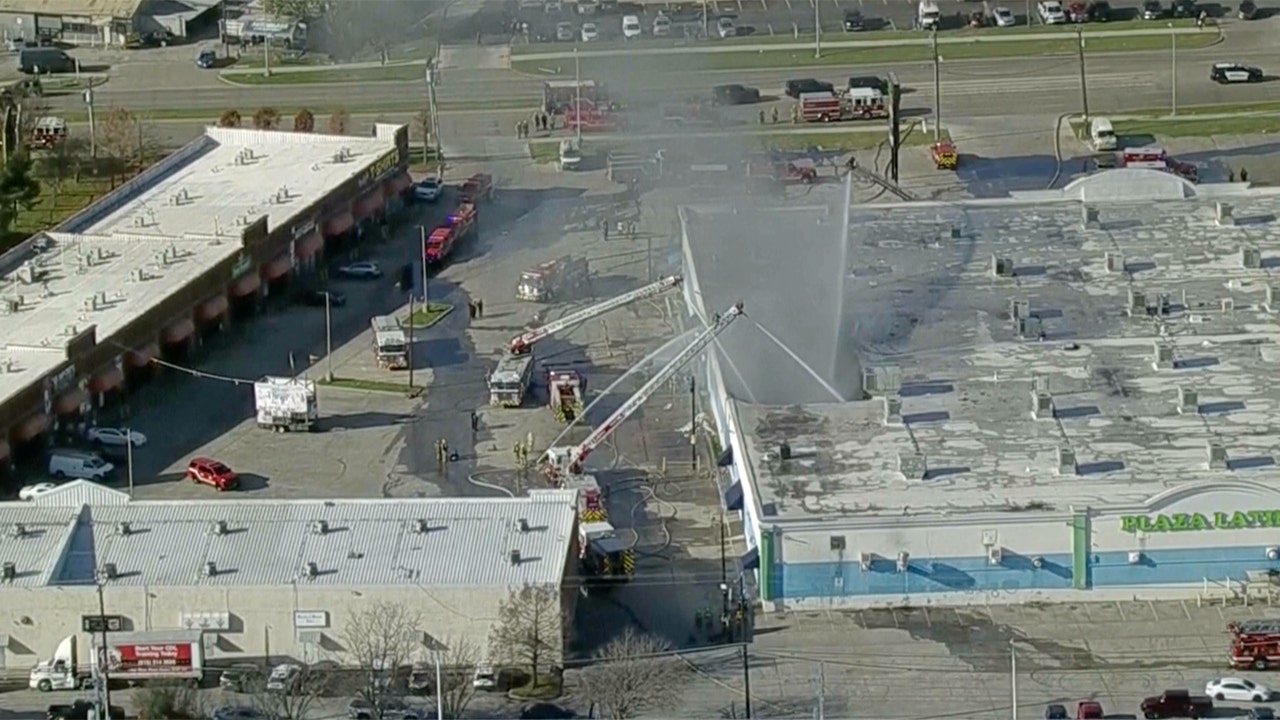World
QUAKECore Builds The World’s Largest DePIN For Natural Disaster Alerts

Natural Disasters have been increasing over the last decade (Photo By: David Handschuh/NY Daily News … [+]
DePIN Is Becoming a “Tech For Good” Solution for Natural Disasters
In a pioneering step for disaster management, QUAKECore Network is creating a decentralized seismic sensor network to detect early signs of natural disasters, such as earthquakes, tsunamis, and volcanic eruptions. By leveraging blockchain technology, QUAKECore aims to democratize disaster alerts with a community-owned infrastructure and incentivized data-sharing model powered by its native $QCT token.
This initiative represents a significant advancement in natural disaster preparedness, offering a solution that overcomes the inefficiencies and vulnerabilities of centralized alert systems.
What Is DePIN?
Previously I wrote about how people using DePIN, or Decentralized Physical Infrastructure Networks, were making passive income. DePIN combines blockchain technology with physical hardware. These networks enable individuals to own and operate infrastructure devices, such as sensors, while earning rewards for their contributions.
According to Beincrypto, the DePIN sector has experienced significant expansion, with its market capitalization increasing by 400% to $20 billion over the past year.
In contrast to traditional systems, DePINs are resilient, scalable, and inclusive, leveraging decentralized ownership to remove bottlenecks and inefficiencies. In disaster management, DePINs like QUAKECore can provide faster and more accurate alerts by relying on collective data from a global network of devices.
Why Decentralized Alerts Are Critical
The urgency for better disaster management is undeniable. In 2024, natural disasters have already taken a significant toll. According to USA Facts, the frequency of major natural disasters has risen notably, with nine of the ten years with the most billion-dollar disasters occurring in the last decade.
Examples include:
Floods in Spain’s Valencia region: Over 200 lives were lost this year, with delayed emergency alerts playing a critical role in the tragedy.
Hurricanes in Florida and North Carolina: Recent storms have caused widespread devastation, displacing thousands of families and resulting in billions of dollars in damages. The intensity of these hurricanes underscores the need for faster, more reliable warning systems that can help communities prepare and respond.
Traditional alert systems are often centralized, meaning they depend on a single authority for data processing and dissemination. These systems face several challenges:
- Infrastructure gaps: Many regions lack adequate sensor coverage, leaving communities vulnerable.
- Delayed responses: Centralized decision-making can slow down the issuance of alerts.
- Costly maintenance: Centralized networks are expensive and challenging to scale globally.
Decentralized systems like QUAKECore address these shortcomings by enabling a more distributed and efficient approach to disaster detection.
How QUAKECore’s DePIN Works
QUAKECore is building a global network of seismic sensors, including its proprietary QUAKE Devices, third-party stations, and even regular smartphones. Participants connect their devices to the network and earn $QCT tokens for sharing local seismic data.
When multiple sensors in a specific area detect abnormal seismic activity, the network’s decentralized platform analyzes the data and triggers alerts through a disaster alert dApp. These alerts can be sent directly to local communities and emergency responders in real time, bypassing delays common in centralized systems.
QUAKECore DePIN devices for Natural Disaster Alerts
Beyond emergency alerts, QUAKECore plans to monetize seismic data by selling it to organizations that rely on such insights for planning and decision-making. Potential customers include:
- Government agencies for disaster response and risk assessment.
- Insurance companies for evaluating coverage and premiums.
- Construction firms for earthquake-resistant designs.
- Smart city developers for resilient infrastructure planning.
- Research institutions for studying geological trends.
Infrastructure Powered by Blockchain
To ensure transparency, scalability, and efficiency, QUAKECore’s system relies on blockchain technology as its foundational infrastructure. By leveraging peaq, a layer-1 blockchain designed for DePINs, QUAKECore maximizes the potential of its network.
Key features of this infrastructure include data authentication, decentralized storage, automated rewards and scalability. By building on peaq, QUAKECore ensures its system is future-ready and resilient against the challenges of centralized infrastructure.
Alternatives to DePIN-Based Alerts
While centralized alert systems have been effective to some extent, they face notable limitations:
- Coverage issues: Remote areas are often excluded from centralized networks.
- Dependence on single entities: Failures or delays in a central authority can have catastrophic consequences.
- High operational costs: Maintaining centralized infrastructure is resource-intensive.
DePINs, like QUAKECore’s network, solve these issues by distributing ownership, enabling faster alerts, and reducing reliance on single points of failure.
The Road Ahead
With its decentralized approach, QUAKECore is on track to revolutionize disaster management. By empowering individuals to participate in seismic data collection and providing real-time alerts, the network represents a more inclusive and resilient alternative to traditional systems.
“Centralized alert systems often fail to meet the demands of modern disaster response,” says Rüdiger Strack, co-founder of QUAKECore. “By decentralizing seismic data collection and incentivizing participation, we’re building a network that saves lives while offering value to contributors and data buyers alike.”
Rüdiger Strack, co-founder of QUAKECore
As climate change intensifies the frequency and severity of natural disasters, solutions like QUAKECore’s decentralized network are more critical than ever. By combining blockchain infrastructure with community participation, this initiative promises faster, more reliable disaster alerts and a more equitable approach to disaster management.
QUAKECore’s innovative use of DePIN technology sets a new standard for life-saving infrastructure, proving that decentralization can do more than drive efficiency — it can save lives.










